Camino Stage 4 - Leon to O Cebreiro
- Time at the historic city of León with its beautiful cathedral
- Enjoying an endless succession of beautiful churches and buildings on the route
- Pretty villages and rolling mountains of Galicia
- Meeting fellow pilgrims, hearing their stories and travel tips along the way
- Reaching the highest point of the Camino Frances – Cruz de Ferro (1504m)
Gallery
Itinerary
Day 1 Arrive in León and overnightYour journey on the last 300km of the Camino Frances to Santiago begins in the beautiful city of León. The magnificent Cathedral is the spiritual heart of the city packed with beautiful architecture. Oviedo (1h30 by bus) and Madrid (4h30 by train) are the most convenient airports.
A wonderful accommodation in a prime location in Leon. All rooms have Jacuzzi showers and this is a great spot to wander around the city.
Follow the discreet shells out of Leon, past the flawless cathedral and out of the city via San Marcos. There are two routes for today. Our route follows a nicer, quieter route to Villar de Mazarife.
Ascent: 144m (472ft) / Descent: 73m (240ft)

It is located next to the church in a reformer manor house from 70 years ago, It has a Bar and offers pilgrim menu. It also has a terrace for the pilgrim´s rest.
Continuing across the plains of Leon you can look forward to reaching Astorga, a lively market town set atop a steep ridge.
Ascent: 195m (640ft) / Descent: 214m (702ft)

The hotel has 23 rooms, all with TV and private bathroom. There is a restaurant with different menus every day, with breakfast served from 07:00.
Your walk from Astorga to Rabanal del Camino will take you towards the highest point of the entire route(which you will reach tomorrow), beware of the weather as it can change quickly and is unpredictable in this area.
Make sure you have enough layers as you won't be able to pick up any in Rabanal.
Ascent: 316m (1,037ft) / Descent: 29m (95ft)

Siblings Cristina, Antonio and Pilar are the second generation at El Refugio Hostería, proudly carrying on the inheritance left by their parents Antonio and Nieves with the help of their other two daughters, María José and María Cruz. The house used to be a haystack where the cattle (mainly sheep and cows) were kept, as well as the grass and leaves used to feed them. Nowadays, it is a rural inn, decorated respectfully with the environment and comfortable.
Climb up to the highest point of your walk, first reach the peak of Cruz de Ferro followed by Alto Altar which sits at 1515 metres. Be aware that you are at an altitude and therefore look after yourself, bring enough food, water and layers to make sure you are always comfortable along the way. After reaching the peak of Alto Altar you will descend down to Molinaseca to spend the night.
Ascent: 418m (1,371ft) / Descent: 990m (3,248ft)

A lovely rustic hostel with lovely spacious rooms and all modern amenities.
Follow the path guiding you through the busy city of Ponferrada, this stage involves some road walking as you make your way through the city. When walking through the city you will have plenty of chances to stop for a drink and some food, however, be extra vigilant when following the shells as there will be some 'recommended route' which have been created to take you past specific shops.
Once out of the city you have Villafranca del Bierzo to look forward to, as in its micro-climate vineyards have populated the area.
Ascent: 313m (1,027ft) / Descent: 401m (1,316ft)
The hotel had a restaurant and bar which often spills out to the square, it offers clean and welcoming accommodation.
There are different routes which you can choose from which are all outlined in the app. The route you choose will largely depend on the experience you are looking for.
The main route lead you through Valcarce Valley between dirt tracks and paths surrounded by native forests.
Ascent: 209m (686ft) / Descent: 77m (253ft)
The alternative route is not very busy, but more challenging, with steep ascents and descends. Your efforts will be rewarded with the best views.
Ascent: 605m (1,984ft) / Descent: 450m (1,476ft)

This wonderful old butter factory is now a resting place for pilgrims. Family run and very cozy and offers great food after a days walking.
Welcome the shortest day, the steep climb through a mainly chestnut woodland on a rocky path up to the village of O’Cebreiro.
O'Cebreiro marks the beginning of the Galician culture and is a foretaste as to what awaits you!
Ascent: 666m (2,185ft) / Descent: 0m (0ft)

This rural stone house is located next to the Camino. It offers 10 comfortable rooms and there is a restaurant with panoramic views and a menu with all traditional Galician ingredients.
After breakfast, your walking holiday will come to an end. See the Travel Info section for some useful details for your onward travel.
This trip has a carbon score of 10kg per person per night, meaning it’s one of our best trips! For comparison, a carbon count of 10kg is equivalent to 18 lattes. Here at Macs, we pride ourselves on being a responsible travel company and continue to adopt, develop and innovate ways to positively impact the environment. Find out more information on how we've carbon counted our trips.
Other Information
Is it for me?If you prefer a bit of a challenge, this stage of the Camino Frances is perfect! Expect 7 consecutive walking days through rolling hills with steady ascents and descents. Have the benefit of starting in the beautiful historic Spanish town of León, and we recommend spending an extra night here if you wish to take your time exploring the sites.
Pilgrimages | For those looking to follow a path of self-discovery. Our Pilgrimage and Camino routes take you on a journey through diverse landscapes and local flavours, while meeting like-minded adventurers along the way.
Inn to Inn Walking | Walk from place-to-place changing accommodations each night. Generally staying in B&Bs, inns, and guesthouses.
Solo Travellers, Families with Teens
The minimum age for this tour is: 12 Years
This itinerary is graded moderate and includes 7 days of walking 14 - 30 km per day. Expect to walk for between 5-8 hours daily. On the Camino, you will follow a mix of dirt trails, minor roads, and established footpaths.
Although the route mostly leads along wide, relatively easy-to-walk paths, the unpaved sections and the daily distances of between 9 and 30 kilometres require a good basic level of fitness and a certain amount of hiking experience. The first section from St Jean-Pied-de-Port with steep ascents and descents in the Pyrenees is the most difficult. The entire 40-day Way of St James naturally requires a great deal of stamina. But the longer you are on the road, the fitter you will become. Pamplona, Logroño, Burgos and León are fascinating cities that you must visit and the smaller towns are also very charming and often offer wonderful regional delicacies.
Our Camino Tours include small rural hotels and hostels close to the route of the Camino. You will always have a private room and en-suite (attached) bathroom. When staying in Leon, Pamplona, Sarria and Santiago, you will stay in 3* hotels, the other nights will be in a mixture of rural hotels and hostels.
Single Rooms
Single rooms are available, although a supplement is payable. The price for a single room is available on the included tab of this tour and in the booking engine.
Meals
A light continental breakfast is included each morning, which can sometimes just be coffee, bread and orange juice. Lunch and dinner are not included so you are free to choose from the available options. Every place you stop will have evening meals available, you can get a pilgrims menu for about 15 Euros which includes 3 courses, wine and water!
Extra Nights
We can add extra nights if you wish, allowing you to have rest days in between the longer walking days.
The Camino is very easy to follow. The route is marked with yellow painted arrows and a yellow shell on a blue background. The detailed travel pack we supply includes a detailed information pack for planning and preparing for your Camino, detailed instructions of how to find your overnight accommodation and everything you need for your Camino.
In addition to the printed route notes, you will receive in your travel pack, you will also have access to our Macs Adventure App, allowing you to follow the route on richly detailed mapping on your smartphone.
Recommended Reading
Although not essential, if you would like more information on the route please see our recommendation below:
- A Guidebook to the Camino de Santiago by John Brierly
- Accommodation in small rural hotels and hostels, twin/double rooms with en-suite W/C
- Daily Breakfast
- Baggage Transfers
- Any transfer(s) listed in the standard itinerary (if applicable)
- Pilgrim Passport and shell
- Access to maps, GPX tracks and daily route information with the Macs Adventure smartphone navigation app
- All your trip documents provided digitally through your online Macs “My Account”
- 24/7 Emergency support
- Return travel to France/Spain.
- Lunches, dinners, snacks or drinks.
- Travel Insurance.
- Personal Equipment.
- Taxi transfers or public transport should you need to skip a stage.
- Additional nights’ accommodation
You can start your Camino on any day of your choosing between March and November.
The best time to walk the Camino depends on your personal preference!
Spring (April to June) is a fantastic choice. Expect pleasant temperatures, blooming landscapes, and fewer crowds than summer. Be prepared for the potential of spring showers.
Summer (July and August) brings sweltering heat to much of Spain, but the northern regions remain refreshingly mild thanks to their coastal climates. If you're a social butterfly, this is your season! The trails are buzzing with fellow pilgrims, creating an unbeatable atmosphere for meeting people, local festivals, and sharing stories.
Autumn (September to early November) is another excellent time to go. You'll enjoy milder temperatures, stunning autumn colors, and quieter trails as the summer crowds dwindle. But, much like spring, there's still a chance of rain—because nature loves keeping us on our toes!
By Air: Oviedo is the closest airport and is serviced by EasyJet from London. There are 8 buses a day from Oviedo to Leon which takes 1hr30. Timetables and fares at Alsa. Madrid airport is the best airport if travelling from outside Europe. Connect by train from Madrid. We can also arrange a private transfer from Oviedo Airport to Leon for a hassle-free start to your trip!
By Train: León is 2h45 by train from Madrid. Timetables and tickets at Renfe.
By Bus: León is 4h00 by bus from Madrid. Timetables and fares at Alsa.
The best place to fly back from would be Santiago de Compostela. From O'Cebriero you would have to take a taxi down the hill to Piedrafita do Cebriero where you would pick up an ALSA bus to Santiago which takes around 2 and a half hours. From Santiago you can fly back to the UK with Ryanair who fly direct to Stansted and Easyjetwho fly direct to Gatwick. From outside the UK, you can fly from Santiago to Paris with Vueling or from Madrid with Ryanair.
We can also arrange a private transfer to take you from O'Cebreiro to Santiago Airport.
At Macs Adventure, we work in partnership with many luggage transfer providers who set a limit on how many bags/suitcases they will transfer per person, and also the weight of the bag/suitcase. Your booking includes transfer of 1 bag per person. It is very important that you read the luggage information specific to your tour before departure. If you do not adhere to these limits, there is a great possibility that you will be charged locally both for extra bags or if they are too heavy. This limitation can be a challenge, especially as airlines generally have limits that are higher. However, our luggage providers have reasons for these limits (usually due to the Health and Safety of their employees), which we must respect.
Baggage transfers are included (max 20kg per person). Your main bag will be transferred each day between your overnight accommodation so that you only need to walk with a day pack.
Extra Nights
There is so much to do and discover on the Way of St. James that many of our customers plan extra nights, either as rest days or to get to know the region even better.
Online Documents
At Macs Adventure we care about the environment! We’re taking action to minimize the impact we have by converting the majority of our tour documentation for online delivery.
On this tour, all your detailed tour information will be digitally delivered. You will have access to this documentation via “My Account” on our website.
Pilgrim Passport
Your Pilgrim Passport (Credencial del Peregrino) and scallop shell will be waiting at your first accommodation. The Passport isn’t just practical—it’s a beautiful record of your Camino journey, officially issued by the Church of St. James. Along the route, you'll collect stamps (sellos) from albergues, churches, cafes, and more. Each stamp is a colorful reminder of your journey. To earn your Compostela Certificate in Santiago, you must walk at least the final 100 km, with your stamps serving as proof of this accomplishment.
Local taxes
Local taxes may apply in some places. Where ever possible, we will pay there taxes in advance for you. It is not always possible to pay the taxes in advance and you will have to pay it directly at your accomodation.
Extra charge
On some days there may be some extra charges on the tour price due to public holiday.
The distances and ascent/descents are approximations of the recommended routes.
Your information pack has a detailed equipment list which includes standard walking gear such as good walking boots or shoes, lightweight clothes, waterproofs and a day pack.
We suggest you book as far in advance as possible as the Camino is extremely popular. Numbers can rise by up to 100,000 people. We will always try and accommodate late booking requests.
The average daily distance of our Camino tours are between 20 and 25 kilometres and you can expect to walk for between five and eight hours each day. You should do as much walking as possible prior to your walk as this will simply add to your enjoyment.
Yes, some people prefer to walk carrying their own bags as a true pilgrim would have. Please select the option for removing baggage transfers if you wish to do this.
Spring (April to June) is a fantastic choice with pleasant temperatures and fewer crowds for a relaxing experience. The northern regions remain refreshingly mild in July and August thanks to their coastal climates, especially in comparison to central and southern Spain. The trails are buzzing with fellow pilgrims during the summer months. Autumn (September to early November) is another excellent time to go, with stunning autumn colors, and quieter trails. During the spring and autumn, it's more likely to experience a shower here or there. There's really no bad time to travel on the Camino.
Public transport and taxis are available if you are need of support contact us and we will be more that happy to help.
Yes, many of our guests travel solo. Although the nature of the Camino means that they soon join up with other pilgrims. There is a single room supplement payable for solo walkers.
No, we do not offer group trips as independent self-guided trips are a much better way to experience the Camino.
You can start on any day of your choosing, subject to availability.
Yes, although we find our standard itineraries are perfect for most walkers, we can add additional nights at many points of the Camino. Please speak to our team for recommendations of extra nights!
A mixture of farm/dirt tracks, minor roads and footpaths. The route is well marked and easy to follow.
Good news! Your Pilgrim Passport (“Credencial del Peregrino”) and shell will be waiting for you at your first accommodation on Day 1. Think of the Pilgrim Passport as a record of your incredible journey along the Camino, issued by the Church of St. James. The Scallop Shell (or "Concha de Vieira") is an iconic symbol of the Camino and is like a badge of honor. You'll see fellow pilgrims proudly displaying theirs on backpacks or hanging them from walking sticks as a sign of their trek to Santiago.
But here’s where it gets fun—you’ll collect stamps (called "sellos") on your Passport at albergues, churches, cafes, and other stops along the route. To receive your Compostela Certificate at the end of your pilgrimage in Santiago, you need to walk at least the final 100km of the Camino. For other sections of the trail, the Passport serves as a stunning keepsake featuring all the colorful stamps you collect along the way.
-
The Ultimate Guide to the Camino de Santiago
Discover the ancient pilgrimage routes that lead to the shrine of the Apostle Saint James in Santiago de Compostela, Spain. Each route offers unique charm, challenges, and unforgettable experiences. Decide for yourself which journey is right for you.
-
Walking the Camino de Santiago
The Camino de Santiago in Spain is the heart of the modern pilgrimage world, and every year, thousands take to its various paths to trek to Santiago de Compostela. A deep spiritual sense accompanies this walk, whether you are looking for it or not. People undertake pilgrimages for a multitude of reasons and it is meeting these fellow pilgrims, hearing their stories and sharing your adventure with them that makes a Camino tour a life-changing event.
-
Everything you need to know about the Camino de Santiago.
In this video, Rachel and Ewan talk through the main points of walking the Camino. While there are more detailed videos on most of the points covered, this is a great place to start to give you a general overview of what walking the Camino Frances is going to be like.
-
What to pack for the Camino de Santiago
One of the most important things people think about when walking the Camino is what to pack. There are some essentials, but most people are trying to lighten their load and carry their backpacks with them as they go. This is amazing, but with Macs Adventure, we transfer your luggage for you (which is not cheating!!) so you can pack whatever you like.
-
How to travel to the Camino de Santiago
How do you get to Sarria? How do you get back from Leon? There are so many start and endpoints on this massive spiritual journey, that we thought it would be helpful to make a video that told you exactly how to get to and from the various points along the route. No longer need you wonder about getting from Biarritz to St Jean Pied de Port, it is all laid out here for you.
-
How many days to walk the Camino?
With a walk that stretches all the way across the north of Spain, you might imagine that there is a lot of different itineraries on this route. In this video we break down how many days it takes to walk the Camino de Santiago and all the different ways you can break it up.
-
 WalkingAdventure of the Week: Camino de Santiago Final Stage - Sarria to SantiagoRead More3 Min Read03 April 2019
WalkingAdventure of the Week: Camino de Santiago Final Stage - Sarria to SantiagoRead More3 Min Read03 April 2019 -
 WalkingAdventure of the Week: Picos de Europa to the CoastRead More3 Min Read25 July 2018
WalkingAdventure of the Week: Picos de Europa to the CoastRead More3 Min Read25 July 2018 -
 Walking4 Foods You'll Eat on the CaminoRead More2 Min Read26 January 2018
Walking4 Foods You'll Eat on the CaminoRead More2 Min Read26 January 2018 -
 WalkingAdventure of the Week: Mallorca: Tramuntana TrailsRead More2 Min Read28 September 2017
WalkingAdventure of the Week: Mallorca: Tramuntana TrailsRead More2 Min Read28 September 2017 -
 WalkingThe Basque Country: 15 interesting things to knowRead More3 Min Read20 July 2017
WalkingThe Basque Country: 15 interesting things to knowRead More3 Min Read20 July 2017 -
 CyclingDiscover: Spain’s fabulous feriasRead More2 Min Read23 March 2017
CyclingDiscover: Spain’s fabulous feriasRead More2 Min Read23 March 2017 -
 WalkingMy 4 Must-Go Routes or Regions for Adventure in SpainRead More2 Min Read23 March 2017
WalkingMy 4 Must-Go Routes or Regions for Adventure in SpainRead More2 Min Read23 March 2017 -
 7 Photos that will make you book a flight to Spain!Read More1 Min Read22 March 2017
7 Photos that will make you book a flight to Spain!Read More1 Min Read22 March 2017 -
 9 Reasons to Visit CataloniaRead More2 Min Read24 March 2016
9 Reasons to Visit CataloniaRead More2 Min Read24 March 2016 -
 WalkingWalking Holidays in Catalonia: FAQ'sRead More1 Min Read06 March 2016
WalkingWalking Holidays in Catalonia: FAQ'sRead More1 Min Read06 March 2016 -
 Tips & Advice10 things to know about the Balearic IslandsRead More3 Min Read15 February 2016
Tips & Advice10 things to know about the Balearic IslandsRead More3 Min Read15 February 2016 -
 WalkingWhere to go on your walking holiday in NovemberRead More2 Min Read15 September 2023
WalkingWhere to go on your walking holiday in NovemberRead More2 Min Read15 September 2023 -
 WalkingWhat do you need to know about walking from Sarria to SantiagoRead More3 Min Read18 October 2013
WalkingWhat do you need to know about walking from Sarria to SantiagoRead More3 Min Read18 October 2013 -
 Hiking in Style - You're Worth it!Read More3 Min Read26 August 2019
Hiking in Style - You're Worth it!Read More3 Min Read26 August 2019 -
 How To Avoid The Perils Associated With Ticks?Read More3 Min Read30 August 2019
How To Avoid The Perils Associated With Ticks?Read More3 Min Read30 August 2019 -
 WalkingHidden Gems - The Town of Three LiesRead More3 Min Read06 February 2020
WalkingHidden Gems - The Town of Three LiesRead More3 Min Read06 February 2020 -
 Tips & AdviceEssential Phrases for SpainRead More1 Min Read17 January 2022
Tips & AdviceEssential Phrases for SpainRead More1 Min Read17 January 2022 -
 WalkingWhich part of Spain is right for me?Read More2 Min Read18 January 2022
WalkingWhich part of Spain is right for me?Read More2 Min Read18 January 2022 -
 Walking5 reasons I loved the Sierra de Aracena!Read More1 Min Read18 January 2022
Walking5 reasons I loved the Sierra de Aracena!Read More1 Min Read18 January 2022 -
 5 Must-See Salvador Dalí sites in CataloniaRead More1 Min Read26 January 2022
5 Must-See Salvador Dalí sites in CataloniaRead More1 Min Read26 January 2022 -
 Tips & Advice10 dishes you have to try in Andalucia!Read More1 Min Read14 February 2022
Tips & Advice10 dishes you have to try in Andalucia!Read More1 Min Read14 February 2022 -
 8 Postcards from the Pueblos Blancos!Read More0 Min Read15 February 2022
8 Postcards from the Pueblos Blancos!Read More0 Min Read15 February 2022 -
 Top 8 Beaches of the Balearic IslandsRead More1 Min Read22 February 2022
Top 8 Beaches of the Balearic IslandsRead More1 Min Read22 February 2022 -
 Balearic Islands 101: A Guide to MenorcaRead More3 Min Read01 March 2022
Balearic Islands 101: A Guide to MenorcaRead More3 Min Read01 March 2022 -
 An Insider's guide to MallorcaRead More3 Min Read01 March 2022
An Insider's guide to MallorcaRead More3 Min Read01 March 2022 -
 Best Lighthouses in Ibiza and FormenteraRead More2 Min Read15 November 2022
Best Lighthouses in Ibiza and FormenteraRead More2 Min Read15 November 2022 -
 Camino23 Essential Camino de Santiago FAQsRead More7 Min Read09 February 2018
Camino23 Essential Camino de Santiago FAQsRead More7 Min Read09 February 2018 -
 CaminoCamino de Santiago Travel GuideRead More4 Min Read11 December 2017
CaminoCamino de Santiago Travel GuideRead More4 Min Read11 December 2017 -
 CaminoEating and Drinking on the Camino Frances - Sarria to SantiagoRead More3 Min Read11 December 2017
CaminoEating and Drinking on the Camino Frances - Sarria to SantiagoRead More3 Min Read11 December 2017 -
 CaminoEssential Phrases for the Camino de SantiagoRead More2 Min Read08 December 2017
CaminoEssential Phrases for the Camino de SantiagoRead More2 Min Read08 December 2017 -
 CaminoEating and Drinking on the Camino de SantiagoRead More4 Min Read08 December 2017
CaminoEating and Drinking on the Camino de SantiagoRead More4 Min Read08 December 2017 -
 WalkingHow fit do I need to be to walk the Camino? Advice & fitness tipsRead More3 Min Read05 December 2017
WalkingHow fit do I need to be to walk the Camino? Advice & fitness tipsRead More3 Min Read05 December 2017 -
 WalkingWhich stage of the Camino de Santiago (Camino Frances) should I walk?Read More7 Min Read05 December 2017
WalkingWhich stage of the Camino de Santiago (Camino Frances) should I walk?Read More7 Min Read05 December 2017 -
 WalkingHow to avoid blisters on a walking holidayRead More3 Min Read06 February 2015
WalkingHow to avoid blisters on a walking holidayRead More3 Min Read06 February 2015 -
 WalkingIs the first day of the French Way Camino the hardest?Read More2 Min Read27 May 2014
WalkingIs the first day of the French Way Camino the hardest?Read More2 Min Read27 May 2014 -
 WalkingCamino Guide Part 3: Which Pilgrimage Route? - Camino FrancesRead More2 Min Read13 February 2014
WalkingCamino Guide Part 3: Which Pilgrimage Route? - Camino FrancesRead More2 Min Read13 February 2014 -
 CaminoCamino Guide 1.2: When to go? Walk or Cycle? Where to Stay?Read More2 Min Read07 February 2014
CaminoCamino Guide 1.2: When to go? Walk or Cycle? Where to Stay?Read More2 Min Read07 February 2014 -
 CaminoWalking the Camino - The first day from St Jean to RoncesvallesRead More2 Min Read20 December 2013
CaminoWalking the Camino - The first day from St Jean to RoncesvallesRead More2 Min Read20 December 2013 -
 Blessings Along "The Way" - Part 1Read More4 Min Read20 April 2020
Blessings Along "The Way" - Part 1Read More4 Min Read20 April 2020 -
 Blessings Along "The Way" - Part 2Read More4 Min Read22 April 2020
Blessings Along "The Way" - Part 2Read More4 Min Read22 April 2020 -
 Blessings Along "The Way" - Parts 3 & 4Read More3 Min Read28 April 2020
Blessings Along "The Way" - Parts 3 & 4Read More3 Min Read28 April 2020 -
 Blessings Along "The Way" - Part 5Read More3 Min Read01 May 2020
Blessings Along "The Way" - Part 5Read More3 Min Read01 May 2020 -
 Regional wines of the Camino InviernoRead More1 Min Read19 January 2021
Regional wines of the Camino InviernoRead More1 Min Read19 January 2021 -
 Tips & AdviceSantiago de Compostela Cathedral Restoration CompletedRead More1 Min Read26 January 2021
Tips & AdviceSantiago de Compostela Cathedral Restoration CompletedRead More1 Min Read26 January 2021 -
 Which Camino is for me?Read More5 Min Read04 November 2024
Which Camino is for me?Read More5 Min Read04 November 2024 -
 Camino & PilgrimagesWhat is a Pilgrimage?Read More2 Min Read25 May 2023
Camino & PilgrimagesWhat is a Pilgrimage?Read More2 Min Read25 May 2023 -
 CaminoKindness, community and camaraderie on the CaminoRead More1 Min Read27 February 2024
CaminoKindness, community and camaraderie on the CaminoRead More1 Min Read27 February 2024 -
 Camino & PilgrimagesCamino de Santiago Shell Meaning & SymbolismRead More2 Min Read31 January 2025
Camino & PilgrimagesCamino de Santiago Shell Meaning & SymbolismRead More2 Min Read31 January 2025 -
 Camino & PilgrimagesCamino Portuguese Coastal vs Camino Portuguese Central RouteRead More3 Min Read09 April 2025
Camino & PilgrimagesCamino Portuguese Coastal vs Camino Portuguese Central RouteRead More3 Min Read09 April 2025 -
 WalkingDiscovering LofotenRead More2 Min Read24 June 2019
WalkingDiscovering LofotenRead More2 Min Read24 June 2019 -
 WalkingWhere are the Lofoten Islands?Read More2 Min Read10 June 2019
WalkingWhere are the Lofoten Islands?Read More2 Min Read10 June 2019 -
 West Highland WayWildlife on the West Highland WayRead More5 Min Read13 May 2019
West Highland WayWildlife on the West Highland WayRead More5 Min Read13 May 2019 -
 WalkingFriluftsliv: A Norwegian PhilosophyRead More3 Min Read16 April 2019
WalkingFriluftsliv: A Norwegian PhilosophyRead More3 Min Read16 April 2019 -
 WalkingTop 20 Inca Trail QuestionsRead More6 Min Read02 April 2019
WalkingTop 20 Inca Trail QuestionsRead More6 Min Read02 April 2019 -
 WalkingHow long does it take to walk the South West Coast Path?Read More2 Min Read04 February 2019
WalkingHow long does it take to walk the South West Coast Path?Read More2 Min Read04 February 2019 -
 WalkingSouth West Coastal Path Walks – Which Section Is for You?Read More8 Min Read15 April 2025
WalkingSouth West Coastal Path Walks – Which Section Is for You?Read More8 Min Read15 April 2025 -
 West Highland WayAdventure of the Week: The West Highland WayRead More4 Min Read09 January 2019
West Highland WayAdventure of the Week: The West Highland WayRead More4 Min Read09 January 2019 -
 WalkingMacs Adventure Top 10 Walking and Cycling Tours of 2019Read More4 Min Read28 December 2018
WalkingMacs Adventure Top 10 Walking and Cycling Tours of 2019Read More4 Min Read28 December 2018 -
 WalkingThe Best Hiking in the Outer HebridesRead More2 Min Read27 December 2018
WalkingThe Best Hiking in the Outer HebridesRead More2 Min Read27 December 2018 -
 CaminoWalking the Camino del Norte: My first CaminoRead More3 Min Read22 November 2018
CaminoWalking the Camino del Norte: My first CaminoRead More3 Min Read22 November 2018 -
 WalkingBest time to go walking in ScotlandRead More4 Min Read22 October 2018
WalkingBest time to go walking in ScotlandRead More4 Min Read22 October 2018 -
 Walking5 Insider Tips for Adventuring in NorwayRead More3 Min Read18 October 2018
Walking5 Insider Tips for Adventuring in NorwayRead More3 Min Read18 October 2018 -
 WalkingInca Trail Permits: How do they work, and what if they sell out?Read More2 Min Read26 September 2018
WalkingInca Trail Permits: How do they work, and what if they sell out?Read More2 Min Read26 September 2018 -
 TrekkingThe Ultimate Trekking Year?Read More5 Min Read06 September 2018
TrekkingThe Ultimate Trekking Year?Read More5 Min Read06 September 2018 -
 Walking14 tips for walking in The SunRead More2 Min Read28 June 2018
Walking14 tips for walking in The SunRead More2 Min Read28 June 2018 -
 Cycling10 benefits of spending time outdoorsRead More2 Min Read14 May 2018
Cycling10 benefits of spending time outdoorsRead More2 Min Read14 May 2018 -
 Walking10 Things to Know About the GR RoutesRead More2 Min Read10 April 2018
Walking10 Things to Know About the GR RoutesRead More2 Min Read10 April 2018 -
 WalkingEating and Drinking on the Hadrian's Wall WalkRead More3 Min Read03 April 2018
WalkingEating and Drinking on the Hadrian's Wall WalkRead More3 Min Read03 April 2018 -
 WalkingHadrian's Wall Walk - Frequently Asked Questions.Read More3 Min Read02 April 2018
WalkingHadrian's Wall Walk - Frequently Asked Questions.Read More3 Min Read02 April 2018 -
 WalkingHow fit should I be for walking Hadrian's Wall Path?Read More3 Min Read02 April 2018
WalkingHow fit should I be for walking Hadrian's Wall Path?Read More3 Min Read02 April 2018 -
 WalkingWhich Itinerary Should I Choose on Hadrian's Wall Path?Read More2 Min Read02 April 2018
WalkingWhich Itinerary Should I Choose on Hadrian's Wall Path?Read More2 Min Read02 April 2018 -
 Walking6 Best historical Sites on Hadrian's Wall WalkRead More2 Min Read02 April 2018
Walking6 Best historical Sites on Hadrian's Wall WalkRead More2 Min Read02 April 2018 -
 WalkingWhat is it like to stay in an Alpine hut?Read More3 Min Read27 March 2018
WalkingWhat is it like to stay in an Alpine hut?Read More3 Min Read27 March 2018 -
 WalkingTravel Guide for Hadrian's Wall PathRead More2 Min Read22 March 2018
WalkingTravel Guide for Hadrian's Wall PathRead More2 Min Read22 March 2018 -
 WalkingWhat to Pack for Walking Hadrian's Wall PathRead More3 Min Read22 March 2018
WalkingWhat to Pack for Walking Hadrian's Wall PathRead More3 Min Read22 March 2018 -
 CyclingLa Joie de Vivre - 7 Ways to Experience FranceRead More1 Min Read20 March 2018
CyclingLa Joie de Vivre - 7 Ways to Experience FranceRead More1 Min Read20 March 2018 -
 West Highland WayAll the most-asked questions on the West Highland WayRead More8 Min Read27 October 2021
West Highland WayAll the most-asked questions on the West Highland WayRead More8 Min Read27 October 2021 -
 Walking10 most Frequently Asked Questions about Wainwright's Coast to Coast WalkRead More2 Min Read22 February 2018
Walking10 most Frequently Asked Questions about Wainwright's Coast to Coast WalkRead More2 Min Read22 February 2018 -
 WalkingHow fit should I be for walking the Coast to Coast?Read More4 Min Read22 February 2018
WalkingHow fit should I be for walking the Coast to Coast?Read More4 Min Read22 February 2018 -
 WalkingAdventure of the Week: Rob Roy WayRead More2 Min Read21 February 2018
WalkingAdventure of the Week: Rob Roy WayRead More2 Min Read21 February 2018 -
 Walking10 Frequently Asked Questions About Walking in the CotswoldsRead More3 Min Read16 February 2018
Walking10 Frequently Asked Questions About Walking in the CotswoldsRead More3 Min Read16 February 2018 -
 Tips & AdviceThe Best Chocolate Box Villages in the CotswoldsRead More2 Min Read16 February 2018
Tips & AdviceThe Best Chocolate Box Villages in the CotswoldsRead More2 Min Read16 February 2018 -
 Food & DrinkWhere to Eat in the CotswoldsRead More3 Min Read13 February 2018
Food & DrinkWhere to Eat in the CotswoldsRead More3 Min Read13 February 2018 -
 West Highland WayTravel to the Start of the West Highland Way in MilngavieRead More1 Min Read08 February 2018
West Highland WayTravel to the Start of the West Highland Way in MilngavieRead More1 Min Read08 February 2018 -
 WalkingWhat to Pack for Walking in the CotswoldsRead More3 Min Read08 February 2018
WalkingWhat to Pack for Walking in the CotswoldsRead More3 Min Read08 February 2018 -
 West Highland Way10 Top Tips for the West Highland WayRead More2 Min Read30 January 2018
West Highland Way10 Top Tips for the West Highland WayRead More2 Min Read30 January 2018 -
 Walking20 interesting facts about Mont BlancRead More4 Min Read05 November 2024
Walking20 interesting facts about Mont BlancRead More4 Min Read05 November 2024 -
 WalkingEating and Drinking on the Tour du Mont BlancRead More4 Min Read23 January 2018
WalkingEating and Drinking on the Tour du Mont BlancRead More4 Min Read23 January 2018 -
 WalkingWhich Tour du Mont Blanc Trip is Right For Me?Read More4 Min Read21 January 2018
WalkingWhich Tour du Mont Blanc Trip is Right For Me?Read More4 Min Read21 January 2018 -
 Walking25 Frequently Asked Questions on the Tour du Mont BlancRead More5 Min Read20 January 2018
Walking25 Frequently Asked Questions on the Tour du Mont BlancRead More5 Min Read20 January 2018 -
 WalkingTour du Mont Blanc Travel GuideRead More1 Min Read20 January 2018
WalkingTour du Mont Blanc Travel GuideRead More1 Min Read20 January 2018 -
 WalkingHow fit do I need to be for the Tour du Mont Blanc?Read More4 Min Read20 January 2018
WalkingHow fit do I need to be for the Tour du Mont Blanc?Read More4 Min Read20 January 2018 -
 WalkingWeather Conditions on the Tour du Mont BlancRead More2 Min Read19 January 2018
WalkingWeather Conditions on the Tour du Mont BlancRead More2 Min Read19 January 2018 -
 WalkingHow Many Days to Walk the Coast to Coast?Read More2 Min Read16 January 2018
WalkingHow Many Days to Walk the Coast to Coast?Read More2 Min Read16 January 2018 -
 Food & DrinkWhere to Eat on the West Highland WayRead More5 Min Read24 November 2017
Food & DrinkWhere to Eat on the West Highland WayRead More5 Min Read24 November 2017 -
 West Highland WayHighlights of the West Highland WayRead More3 Min Read16 November 2017
West Highland WayHighlights of the West Highland WayRead More3 Min Read16 November 2017 -
 WalkingRecord-breaking Munro walker completes 9th roundRead More4 Min Read13 November 2017
WalkingRecord-breaking Munro walker completes 9th roundRead More4 Min Read13 November 2017 -
 WalkingTop Tips for Walking in the RainRead More2 Min Read25 September 2017
WalkingTop Tips for Walking in the RainRead More2 Min Read25 September 2017 -
 WalkingThe South Downs and the magnificent Seven Sisters CliffsRead More2 Min Read18 September 2017
WalkingThe South Downs and the magnificent Seven Sisters CliffsRead More2 Min Read18 September 2017 -
 West Highland WayHow Many Days to Walk the West Highland Way?Read More3 Min Read04 September 2017
West Highland WayHow Many Days to Walk the West Highland Way?Read More3 Min Read04 September 2017 -
 WalkingAdventure of the Week: Pembrokeshire Coastal PathRead More2 Min Read30 August 2017
WalkingAdventure of the Week: Pembrokeshire Coastal PathRead More2 Min Read30 August 2017 -
 Walking9 of the Best Wilderness MoviesRead More4 Min Read11 August 2017
Walking9 of the Best Wilderness MoviesRead More4 Min Read11 August 2017 -
 WalkingWalking in the Yorkshire Dales National ParkRead More3 Min Read04 August 2017
WalkingWalking in the Yorkshire Dales National ParkRead More3 Min Read04 August 2017 -
 Tips & Advice5 Things We Love About YorkshireRead More2 Min Read01 August 2017
Tips & Advice5 Things We Love About YorkshireRead More2 Min Read01 August 2017 -
 WalkingThree of the best summer walking bootsRead More2 Min Read16 June 2017
WalkingThree of the best summer walking bootsRead More2 Min Read16 June 2017 -
 Walking10 things you might not know about the South West Coast PathRead More2 Min Read28 March 2017
Walking10 things you might not know about the South West Coast PathRead More2 Min Read28 March 2017 -
 West Highland WayWhat to Pack to Walk the West Highland WayRead More4 Min Read13 March 2017
West Highland WayWhat to Pack to Walk the West Highland WayRead More4 Min Read13 March 2017 -
 WalkingHigh Routes & Historic Sights - Graeme's Great Glen Way DiaryRead More29 Min Read10 January 2017
WalkingHigh Routes & Historic Sights - Graeme's Great Glen Way DiaryRead More29 Min Read10 January 2017 -
 WalkingHow to Get Fit for a Walking Holiday in 2017Read More3 Min Read06 January 2017
WalkingHow to Get Fit for a Walking Holiday in 2017Read More3 Min Read06 January 2017 -
 CyclingOur Top 5 Areas of Outstanding Natural BeautyRead More2 Min Read30 December 2016
CyclingOur Top 5 Areas of Outstanding Natural BeautyRead More2 Min Read30 December 2016 -
 CyclingThe Best of the Scottish islandsRead More3 Min Read08 November 2016
CyclingThe Best of the Scottish islandsRead More3 Min Read08 November 2016 -
 Walking16 things to know about the UK’s trig pointsRead More2 Min Read25 February 2016
Walking16 things to know about the UK’s trig pointsRead More2 Min Read25 February 2016 -
 WalkingWhat to pack for your first walking holidayRead More3 Min Read18 February 2016
WalkingWhat to pack for your first walking holidayRead More3 Min Read18 February 2016 -
 Walking15 reasons to walk the Pennine WayRead More2 Min Read28 December 2015
Walking15 reasons to walk the Pennine WayRead More2 Min Read28 December 2015 -
 West Highland WaySore Feet: Proud Walkers of the West Highland WayRead More1 Min Read11 November 2015
West Highland WaySore Feet: Proud Walkers of the West Highland WayRead More1 Min Read11 November 2015 -
 TrekkingGetting to the Alta Via- An Adventure in itself!Read More2 Min Read23 October 2015
TrekkingGetting to the Alta Via- An Adventure in itself!Read More2 Min Read23 October 2015 -
 WalkingWhat to pack for the Alta Via 1Read More4 Min Read26 November 2024
WalkingWhat to pack for the Alta Via 1Read More4 Min Read26 November 2024 -
 WalkingExploring the Isle of SkyeRead More1 Min Read14 August 2015
WalkingExploring the Isle of SkyeRead More1 Min Read14 August 2015 -
 WalkingKit review: Merrell Allout Blaze Sieve walking sandalsRead More2 Min Read11 June 2015
WalkingKit review: Merrell Allout Blaze Sieve walking sandalsRead More2 Min Read11 June 2015 -
 WalkingShould I buy walking shoes or boots?Read More4 Min Read09 June 2015
WalkingShould I buy walking shoes or boots?Read More4 Min Read09 June 2015 -
 Sally's Wine Blog: Bordeaux vs BurgundyRead More2 Min Read04 June 2015
Sally's Wine Blog: Bordeaux vs BurgundyRead More2 Min Read04 June 2015 -
 CyclingA first look at the New Hebridean WayRead More3 Min Read22 May 2015
CyclingA first look at the New Hebridean WayRead More3 Min Read22 May 2015 -
 Walking500 miles of new walking trails for ScotlandRead More1 Min Read25 March 2015
Walking500 miles of new walking trails for ScotlandRead More1 Min Read25 March 2015 -
 Cycling10 great birdwatching appsRead More3 Min Read11 March 2015
Cycling10 great birdwatching appsRead More3 Min Read11 March 2015 -
 WalkingTop tips for packing light for a walking holidayRead More5 Min Read12 February 2015
WalkingTop tips for packing light for a walking holidayRead More5 Min Read12 February 2015 -
 WalkingMinshuku and Ryokan - Traditional Japanese accommodationsRead More2 Min Read07 August 2014
WalkingMinshuku and Ryokan - Traditional Japanese accommodationsRead More2 Min Read07 August 2014 -
 WalkingWalking in Japan - the Nakasendo or the Kumano Kodo Trail?Read More2 Min Read07 August 2014
WalkingWalking in Japan - the Nakasendo or the Kumano Kodo Trail?Read More2 Min Read07 August 2014 -
 WalkingEee by gum, it's Yorkshire Day!Read More2 Min Read01 August 2014
WalkingEee by gum, it's Yorkshire Day!Read More2 Min Read01 August 2014 -
 Tips & AdviceHow to get rid of midges in Scotland: Best midge repellent and protectionRead More3 Min Read24 June 2014
Tips & AdviceHow to get rid of midges in Scotland: Best midge repellent and protectionRead More3 Min Read24 June 2014 -
 WalkingThe 5 Best Places to Walk or Hike in JulyRead More2 Min Read13 June 2014
WalkingThe 5 Best Places to Walk or Hike in JulyRead More2 Min Read13 June 2014 -
 CyclingOutdoor access in England and ScotlandRead More4 Min Read05 May 2014
CyclingOutdoor access in England and ScotlandRead More4 Min Read05 May 2014 -
 WalkingGear review: Walking polesRead More3 Min Read06 February 2014
WalkingGear review: Walking polesRead More3 Min Read06 February 2014 -
 WalkingThe Benefits of Walking PolesRead More4 Min Read22 October 2024
WalkingThe Benefits of Walking PolesRead More4 Min Read22 October 2024 -
 WalkingWhat else is there to do?: Pembrokeshire Coast PathRead More4 Min Read17 January 2014
WalkingWhat else is there to do?: Pembrokeshire Coast PathRead More4 Min Read17 January 2014 -
 WalkingA guide to walking the Great Glen WayRead More3 Min Read22 November 2013
WalkingA guide to walking the Great Glen WayRead More3 Min Read22 November 2013 -
 WalkingFive of the best winter walking bootsRead More2 Min Read05 November 2013
WalkingFive of the best winter walking bootsRead More2 Min Read05 November 2013 -
 WalkingA Great Time in the Great GlenRead More5 Min Read19 July 2013
WalkingA Great Time in the Great GlenRead More5 Min Read19 July 2013 -
 WalkingFive of the best walking socksRead More3 Min Read28 May 2013
WalkingFive of the best walking socksRead More3 Min Read28 May 2013 -
 West Highland WayBest holidays for beginner walkersRead More4 Min Read06 February 2013
West Highland WayBest holidays for beginner walkersRead More4 Min Read06 February 2013 -
 WalkingHow to dress for winter walkingRead More3 Min Read24 December 2012
WalkingHow to dress for winter walkingRead More3 Min Read24 December 2012 -
 WalkingGuide to buying a waterproof jacketRead More5 Min Read23 November 2012
WalkingGuide to buying a waterproof jacketRead More5 Min Read23 November 2012 -
 WalkingWhy autumn is a great time to go walkingRead More2 Min Read16 September 2020
WalkingWhy autumn is a great time to go walkingRead More2 Min Read16 September 2020 -
 CyclingBenefits of baselayers for walkers and cyclistsRead More3 Min Read24 September 2012
CyclingBenefits of baselayers for walkers and cyclistsRead More3 Min Read24 September 2012 -
 WalkingGreat alternatives to the Cotswold Way!Read More2 Min Read22 June 2012
WalkingGreat alternatives to the Cotswold Way!Read More2 Min Read22 June 2012 -
 WalkingHow many days to walk the Cotswold Way?Read More2 Min Read03 January 2012
WalkingHow many days to walk the Cotswold Way?Read More2 Min Read03 January 2012 -
 WalkingWhat to Pack for the Coast to Coast WalkRead More2 Min Read22 October 2011
WalkingWhat to Pack for the Coast to Coast WalkRead More2 Min Read22 October 2011 -
 Walking7 of the best places to stay on Coast to Coast WalkRead More2 Min Read20 October 2011
Walking7 of the best places to stay on Coast to Coast WalkRead More2 Min Read20 October 2011 -
 WalkingTop Tips on Travelling to the Coast to Coast WalkRead More4 Min Read13 October 2011
WalkingTop Tips on Travelling to the Coast to Coast WalkRead More4 Min Read13 October 2011 -
 WalkingHow fit do you need to be to climb Kilimanjaro?Read More2 Min Read15 September 2011
WalkingHow fit do you need to be to climb Kilimanjaro?Read More2 Min Read15 September 2011 -
 Walking4 Alternative Walks to the West Highland WayRead More3 Min Read10 February 2011
Walking4 Alternative Walks to the West Highland WayRead More3 Min Read10 February 2011 -
 West Highland WayWhat to Pack for the West Highland Way?Read More4 Min Read13 January 2011
West Highland WayWhat to Pack for the West Highland Way?Read More4 Min Read13 January 2011 -
 West Highland WaySkipping a Section on the West Highland WayRead More4 Min Read13 January 2011
West Highland WaySkipping a Section on the West Highland WayRead More4 Min Read13 January 2011 -
 TrekkingKilimanjaro Climb Diary - Summit DayRead More3 Min Read30 January 2010
TrekkingKilimanjaro Climb Diary - Summit DayRead More3 Min Read30 January 2010 -
 WalkingA Safari Less Travelled - ScotlandRead More5 Min Read09 July 2019
WalkingA Safari Less Travelled - ScotlandRead More5 Min Read09 July 2019 -
 WalkingExperience The Magic Of Skye In Style With The ExpertsRead More2 Min Read25 July 2019
WalkingExperience The Magic Of Skye In Style With The ExpertsRead More2 Min Read25 July 2019 -
 WalkingAdventure Of The Week: The Arran Coastal WayRead More3 Min Read10 July 2019
WalkingAdventure Of The Week: The Arran Coastal WayRead More3 Min Read10 July 2019 -
 WalkingAdventure Of The Week: The Alta Via 1Read More2 Min Read17 July 2019
WalkingAdventure Of The Week: The Alta Via 1Read More2 Min Read17 July 2019 -
 West Highland WayOne "Appy" Macs Customer!Read More4 Min Read01 July 2019
West Highland WayOne "Appy" Macs Customer!Read More4 Min Read01 July 2019 -
 WalkingAdventure Of The Week: The West Highland WaheyRead More6 Min Read07 August 2019
WalkingAdventure Of The Week: The West Highland WaheyRead More6 Min Read07 August 2019 -
 Adventure of the Week: Queen Charlotte TrackRead More2 Min Read24 July 2019
Adventure of the Week: Queen Charlotte TrackRead More2 Min Read24 July 2019 -
 TrekkingA Safari Less Travelled - England's South West CoastRead More7 Min Read05 August 2019
TrekkingA Safari Less Travelled - England's South West CoastRead More7 Min Read05 August 2019 -
 Walking40 Miles In One Day For Glasgow Children's HospitalRead More3 Min Read26 July 2019
Walking40 Miles In One Day For Glasgow Children's HospitalRead More3 Min Read26 July 2019 -
 Adventure of the Week: Great Glen EscapeRead More1 Min Read31 July 2019
Adventure of the Week: Great Glen EscapeRead More1 Min Read31 July 2019 -
 WalkingAdventure of the Week: Nakasendo Trail, Tokyo, Kyoto, Mount Koya & NaraRead More4 Min Read14 August 2019
WalkingAdventure of the Week: Nakasendo Trail, Tokyo, Kyoto, Mount Koya & NaraRead More4 Min Read14 August 2019 -
 WalkingThe Safari Less Travelled – A Rare Find?Read More6 Min Read09 September 2019
WalkingThe Safari Less Travelled – A Rare Find?Read More6 Min Read09 September 2019 -
 WalkingGreat Glen Escape - Monster Hunting on FootRead More4 Min Read16 September 2019
WalkingGreat Glen Escape - Monster Hunting on FootRead More4 Min Read16 September 2019 -
 Adventure of The Week: Bavarian Alps: Hiking the Salt TrailRead More3 Min Read04 September 2019
Adventure of The Week: Bavarian Alps: Hiking the Salt TrailRead More3 Min Read04 September 2019 -
 Active Travel in Portugal - Where Should I Go?Read More3 Min Read10 January 2020
Active Travel in Portugal - Where Should I Go?Read More3 Min Read10 January 2020 -
 WalkingSao Miguel: Azores Green Island - Europe's Best Kept Secret?Read More3 Min Read12 February 2020
WalkingSao Miguel: Azores Green Island - Europe's Best Kept Secret?Read More3 Min Read12 February 2020 -
 WalkingSeven Reasons to Visit the Basque CountryRead More3 Min Read27 February 2020
WalkingSeven Reasons to Visit the Basque CountryRead More3 Min Read27 February 2020 -
 WalkingEverything You Need to Know About Walking The Rota VicentinaRead More4 Min Read05 March 2020
WalkingEverything You Need to Know About Walking The Rota VicentinaRead More4 Min Read05 March 2020 -
 WalkingHistorical Highlights of the Northumberland Coastal PathRead More2 Min Read26 June 2020
WalkingHistorical Highlights of the Northumberland Coastal PathRead More2 Min Read26 June 2020 -
 WalkingTop Reasons to Walk the Northumberland Coastal PathRead More2 Min Read19 August 2020
WalkingTop Reasons to Walk the Northumberland Coastal PathRead More2 Min Read19 August 2020 -
 WalkingFrequently Asked Questions about walking the Northumberland CoastRead More2 Min Read19 August 2020
WalkingFrequently Asked Questions about walking the Northumberland CoastRead More2 Min Read19 August 2020 -
 Tips & AdviceTop Experiences Along the Cleveland WayRead More5 Min Read23 July 2024
Tips & AdviceTop Experiences Along the Cleveland WayRead More5 Min Read23 July 2024 -
 Walking4 Reasons to Walk the Pembrokeshire Coast PathRead More2 Min Read25 September 2020
Walking4 Reasons to Walk the Pembrokeshire Coast PathRead More2 Min Read25 September 2020 -
 How Difficult is the Pembrokeshire Coast Path?Read More2 Min Read25 September 2020
How Difficult is the Pembrokeshire Coast Path?Read More2 Min Read25 September 2020 -
 Famous Welsh WritersRead More2 Min Read15 October 2020
Famous Welsh WritersRead More2 Min Read15 October 2020 -
 WalkingTop 5 highlights from the Great Ocean WalkRead More3 Min Read09 February 2021
WalkingTop 5 highlights from the Great Ocean WalkRead More3 Min Read09 February 2021 -
 The Ultimate Walking Boots Guide for BeginnersRead More7 Min Read10 November 2021
The Ultimate Walking Boots Guide for BeginnersRead More7 Min Read10 November 2021 -
 French Culture and Why I Love ItRead More1 Min Read19 January 2022
French Culture and Why I Love ItRead More1 Min Read19 January 2022 -
 Tips & AdviceWalk Your Way to WellnessRead More3 Min Read28 December 2023
Tips & AdviceWalk Your Way to WellnessRead More3 Min Read28 December 2023 -
 Meeting the people behind the scenery - Minna & Classic RoutesRead More2 Min Read01 February 2023
Meeting the people behind the scenery - Minna & Classic RoutesRead More2 Min Read01 February 2023 -
 Walking6 reasons to visit West SwedenRead More3 Min Read02 February 2023
Walking6 reasons to visit West SwedenRead More3 Min Read02 February 2023 -
 Tips & AdviceMacs Adventure App Features to Transform Your Next TripRead More3 Min Read10 June 2024
Tips & AdviceMacs Adventure App Features to Transform Your Next TripRead More3 Min Read10 June 2024 -
 WalkingMacs Adventure Trip Types DefinedRead More3 Min Read28 October 2024
WalkingMacs Adventure Trip Types DefinedRead More3 Min Read28 October 2024 -
 The Best Walking Boots for WomenRead More3 Min Read01 October 2024
The Best Walking Boots for WomenRead More3 Min Read01 October 2024 -
 Best Hikes in EuropeRead More6 Min Read02 October 2024
Best Hikes in EuropeRead More6 Min Read02 October 2024 -
 What to Pack for a Self-Guided Walking Trip with Macs AdventureRead More4 Min Read03 October 2024
What to Pack for a Self-Guided Walking Trip with Macs AdventureRead More4 Min Read03 October 2024 -
 The Best Time to Visit IrelandRead More5 Min Read07 October 2024
The Best Time to Visit IrelandRead More5 Min Read07 October 2024 -
 Guide to Walking in ItalyRead More4 Min Read08 October 2024
Guide to Walking in ItalyRead More4 Min Read08 October 2024 -
 Best Walking Holidays in ItalyRead More8 Min Read09 October 2024
Best Walking Holidays in ItalyRead More8 Min Read09 October 2024 -
 Italy Travel Tips: Everything You Need To KnowRead More3 Min Read10 October 2024
Italy Travel Tips: Everything You Need To KnowRead More3 Min Read10 October 2024 -
 Navigating the Italian Food SceneRead More7 Min Read14 October 2024
Navigating the Italian Food SceneRead More7 Min Read14 October 2024 -
 Tips for Travelling To and Around ItalyRead More8 Min Read15 October 2024
Tips for Travelling To and Around ItalyRead More8 Min Read15 October 2024 -
 WalkingGuide to Walking Cinque TerreRead More4 Min Read16 October 2024
WalkingGuide to Walking Cinque TerreRead More4 Min Read16 October 2024 -
 Food & DrinkBest Restaurants in Cinque TerreRead More4 Min Read16 October 2024
Food & DrinkBest Restaurants in Cinque TerreRead More4 Min Read16 October 2024 -
 ItalyThe Best Things to Do in TuscanyRead More4 Min Read21 October 2024
ItalyThe Best Things to Do in TuscanyRead More4 Min Read21 October 2024 -
 Tips & AdviceCinque Terre vs Amalfi CoastRead More4 Min Read22 October 2024
Tips & AdviceCinque Terre vs Amalfi CoastRead More4 Min Read22 October 2024 -
 Tips & AdviceUltimate Guide to Walking the Amalfi CoastRead More6 Min Read23 October 2024
Tips & AdviceUltimate Guide to Walking the Amalfi CoastRead More6 Min Read23 October 2024 -
 Tips & AdviceFood and Drink on the Amalfi CoastRead More3 Min Read24 October 2024
Tips & AdviceFood and Drink on the Amalfi CoastRead More3 Min Read24 October 2024 -
 Tips & AdviceThe Best Things to Do on the Amalfi CoastRead More7 Min Read25 October 2024
Tips & AdviceThe Best Things to Do on the Amalfi CoastRead More7 Min Read25 October 2024 -
 ItalyThe Best Hikes in the DolomitesRead More8 Min Read13 November 2024
ItalyThe Best Hikes in the DolomitesRead More8 Min Read13 November 2024 -
 WalkingThe Ultimate Guide to Hiking the DolomitesRead More5 Min Read21 November 2024
WalkingThe Ultimate Guide to Hiking the DolomitesRead More5 Min Read21 November 2024 -
 Food & DrinkThe Best Food and Drink in TuscanyRead More13 Min Read27 November 2024
Food & DrinkThe Best Food and Drink in TuscanyRead More13 Min Read27 November 2024 -
 WalkingWest Highland Way vs The Great Glen Way - Walking Holidays in ScotlandRead More4 Min Read28 November 2024
WalkingWest Highland Way vs The Great Glen Way - Walking Holidays in ScotlandRead More4 Min Read28 November 2024 -
 WalkingPaula's Walking & Wellbeing JourneyRead More4 Min Read14 January 2025
WalkingPaula's Walking & Wellbeing JourneyRead More4 Min Read14 January 2025 -
 WalkingTrending Walking Destinations for 2025Read More6 Min Read27 December 2024
WalkingTrending Walking Destinations for 2025Read More6 Min Read27 December 2024 -
 WalkingThe Year in Review: 2024’s Most Popular Walking DestinationsRead More5 Min Read30 December 2024
WalkingThe Year in Review: 2024’s Most Popular Walking DestinationsRead More5 Min Read30 December 2024 -
 Best Things to do in Loch NessRead More6 Min Read09 January 2025
Best Things to do in Loch NessRead More6 Min Read09 January 2025 -
 WalkingFuel Your Adventure: The Ultimate Guide to Nutrition on Walking TrailsRead More3 Min Read27 January 2025
WalkingFuel Your Adventure: The Ultimate Guide to Nutrition on Walking TrailsRead More3 Min Read27 January 2025 -
 WalkingVicki's Walking & Wellbeing JourneyRead More3 Min Read11 February 2025
WalkingVicki's Walking & Wellbeing JourneyRead More3 Min Read11 February 2025 -
 Sustainable TravelWhat Is Forest Bathing? A Beginner's Guide to Shinrin-YokuRead More6 Min Read23 February 2025
Sustainable TravelWhat Is Forest Bathing? A Beginner's Guide to Shinrin-YokuRead More6 Min Read23 February 2025 -
 Sustainable TravelIsabelle's Walking & Wellbeing JourneyRead More1 Min Read03 March 2025
Sustainable TravelIsabelle's Walking & Wellbeing JourneyRead More1 Min Read03 March 2025
-
Save %8 Days 7 Nights
Camino Final Stage - Sarria to Santiago - 8 Days
Walk the last 100km of the Camino Frances from Sarria to Santiago de Compostela.Highlights- Walk the final 100km of the Camino de Santiago
- Collect your Compostela from the Pilgrim's Office
- Overnight in Melide - break up the long hiking day
-
Save %12 Days 11 Nights
Relaxed Camino Final Stage - Sarria to Santiago
Walk the final stage of the Camino over a leisurely 10 days, walking less than 15km per day.Highlights- The final stage at a leisurely pace
- Enjoy camaraderie with your fellow pilgrims
- Collect your Compostela from the Pilgrim Office
-
Save %16 Days 15 Nights
Camino Stage 4 & 5 - Leon to Santiago
Walk the final 2 stages of the Camino Frances, starting in historic León and finishing in Santiago.Highlights- Start in León with its magnificent cathedral
- The highest point of the Camino - Cruz de Ferro
- Collect your Compostela from the Pilgrim Office
WHY MACS?

The Biggest Choice

Around Since 2003

23,000+ Customer Reviews




































































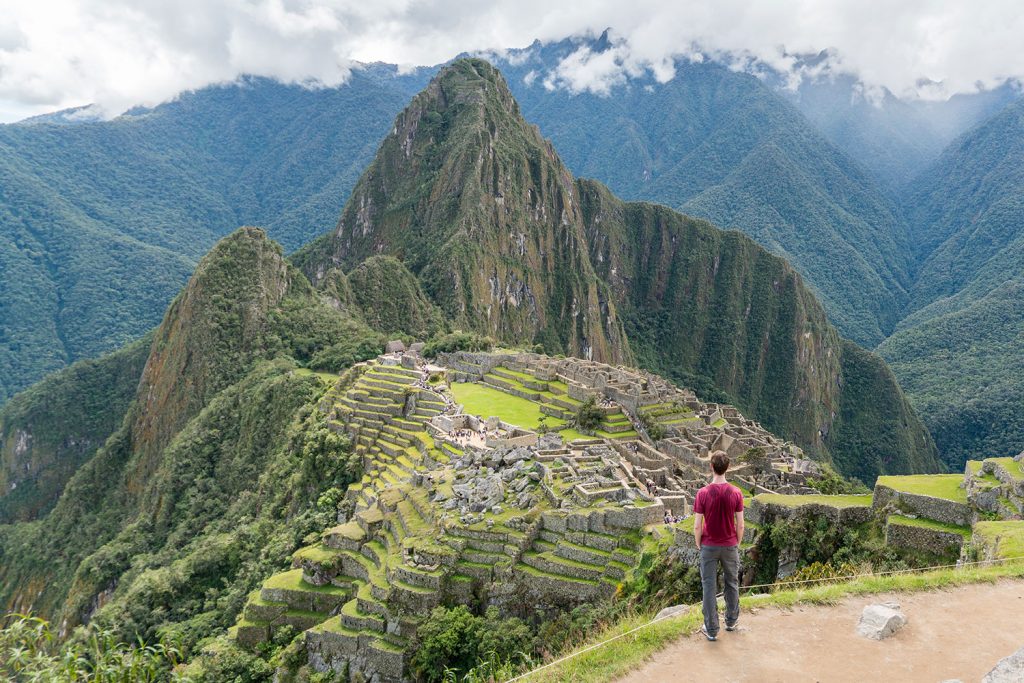










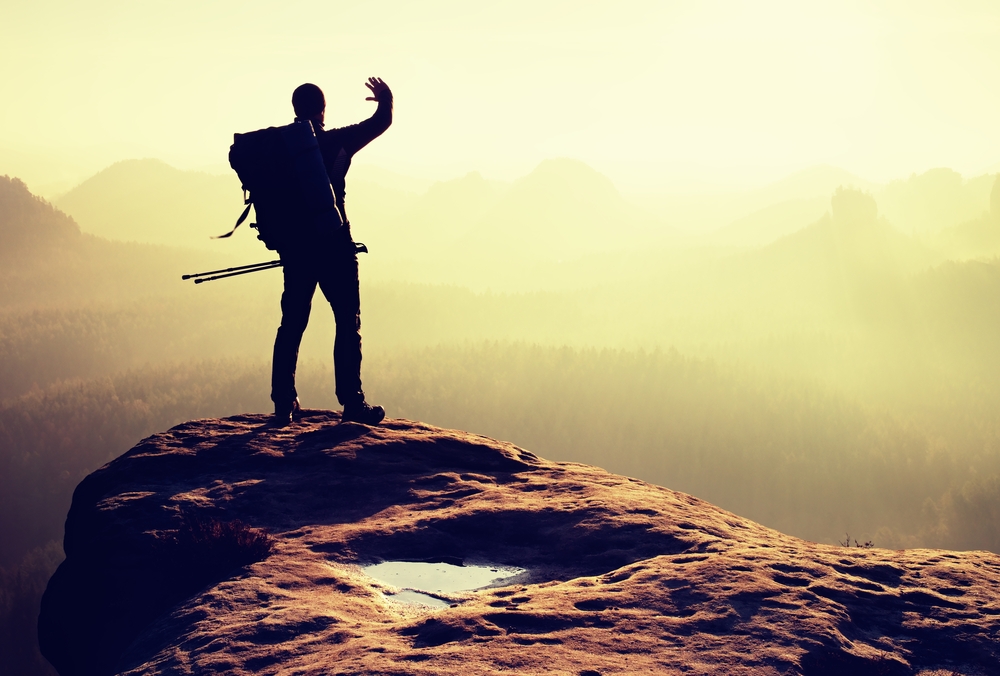
































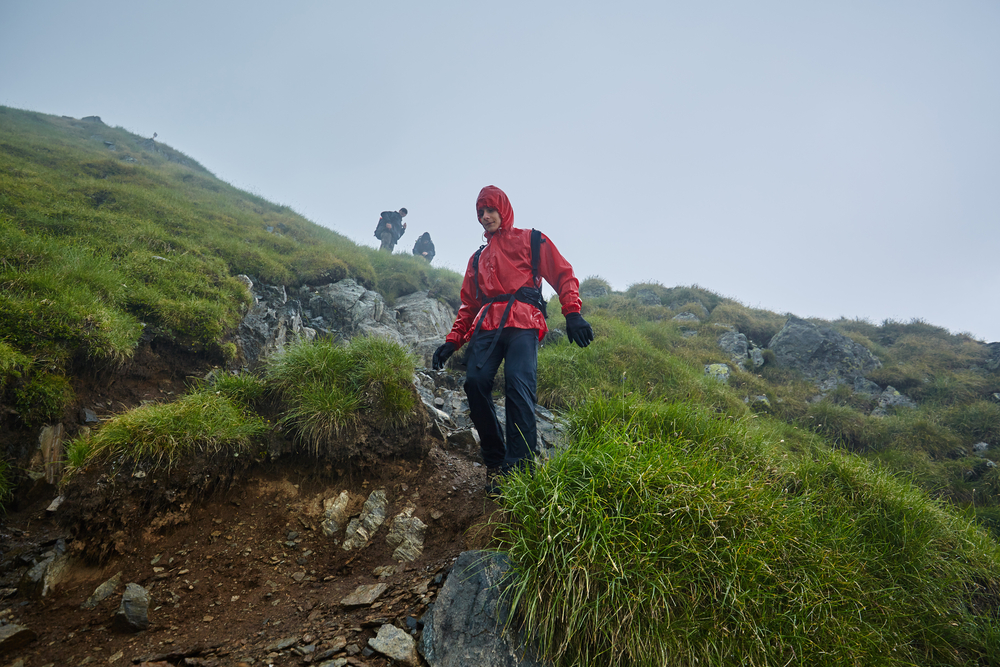





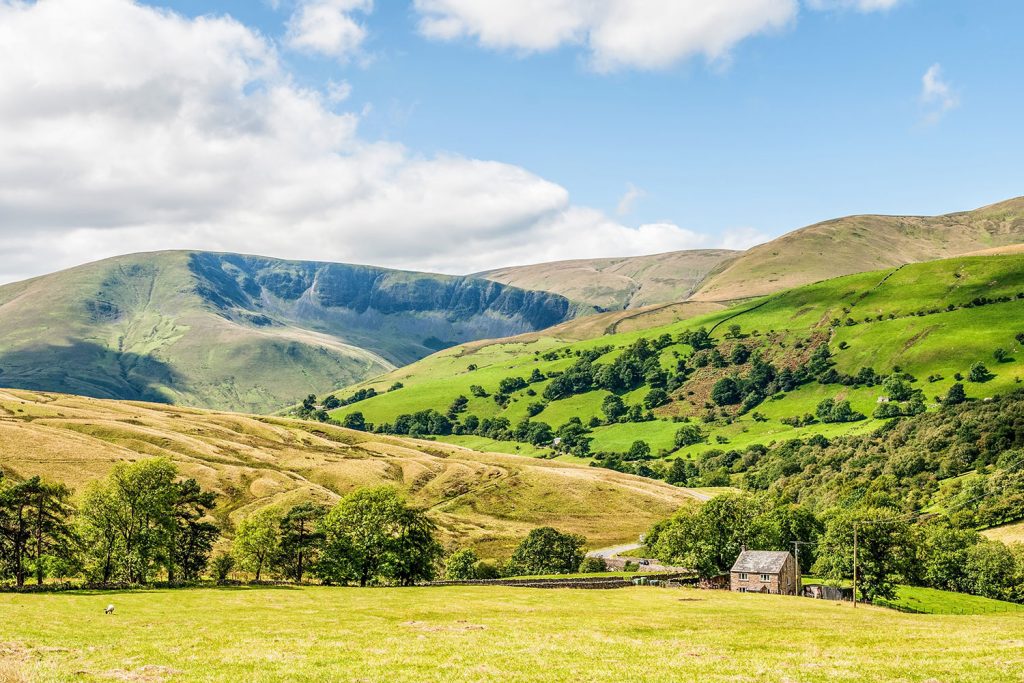


















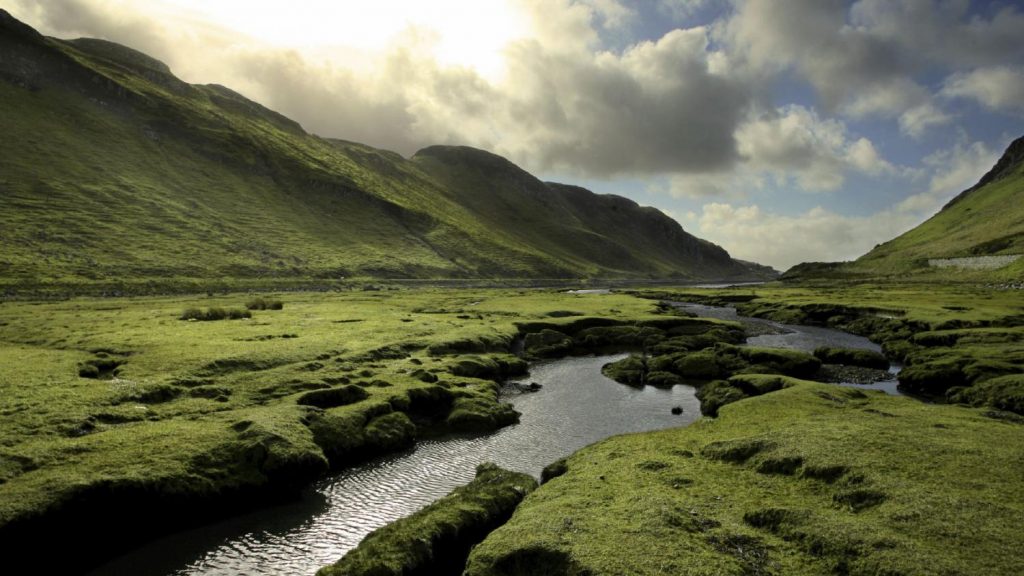
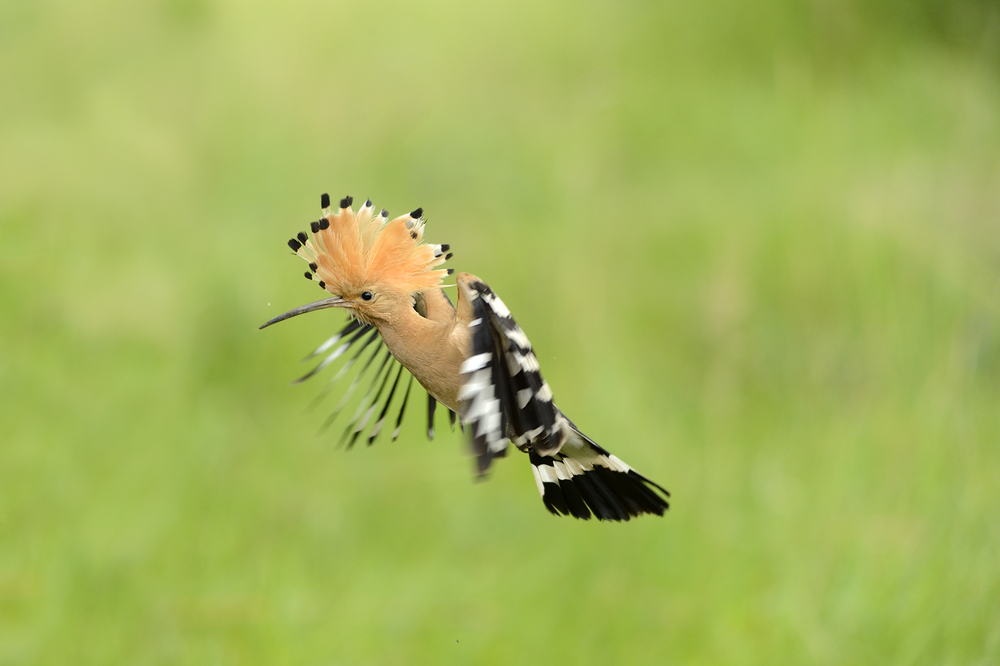


























































































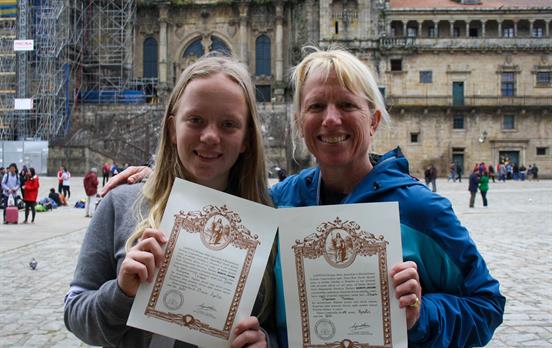

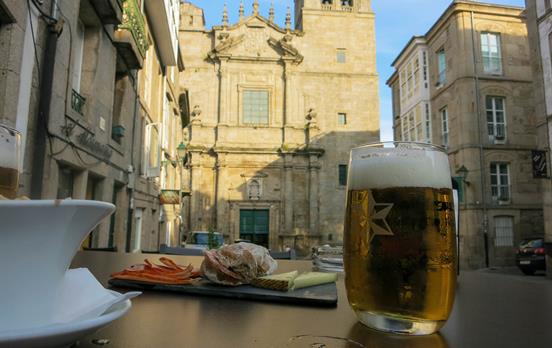

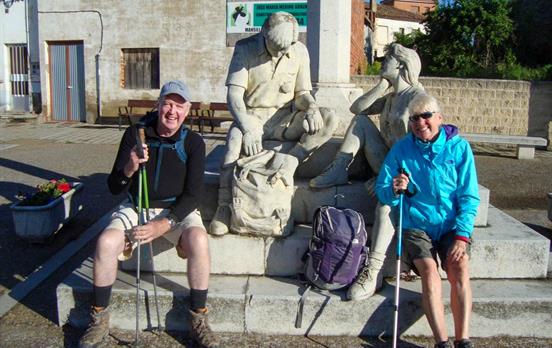
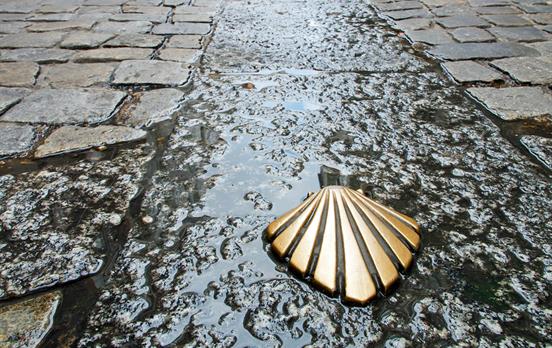
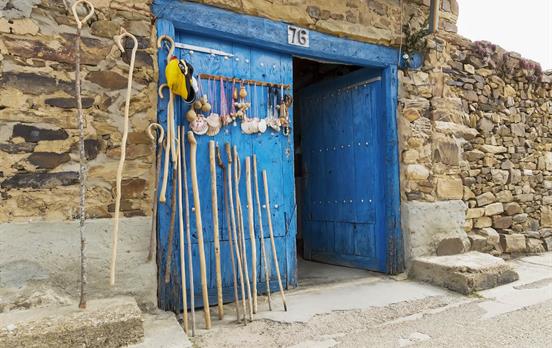
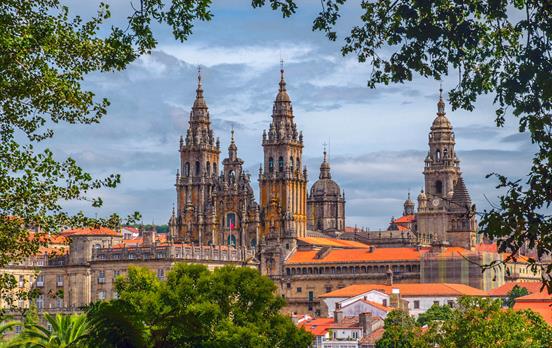
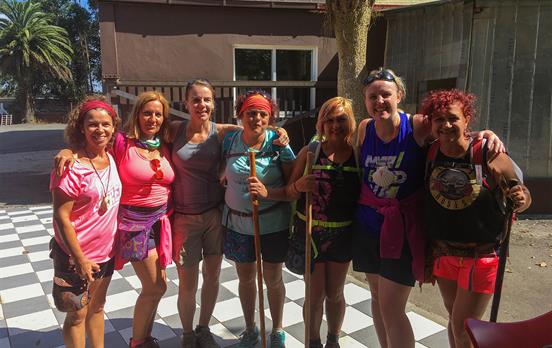


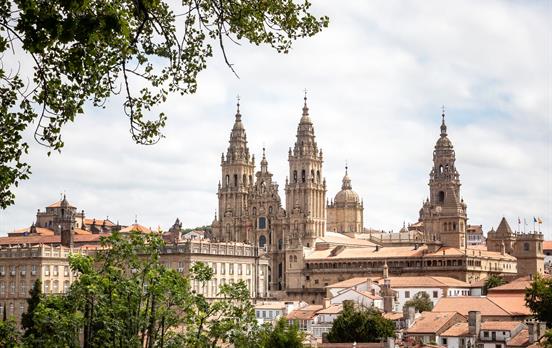
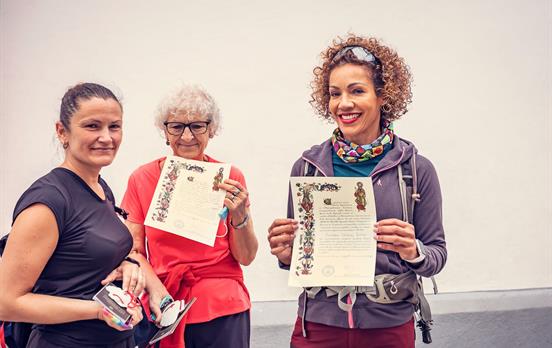
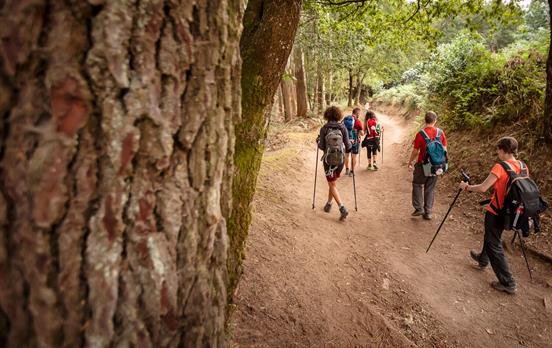
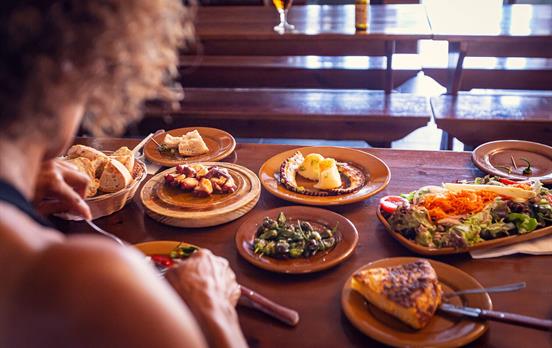
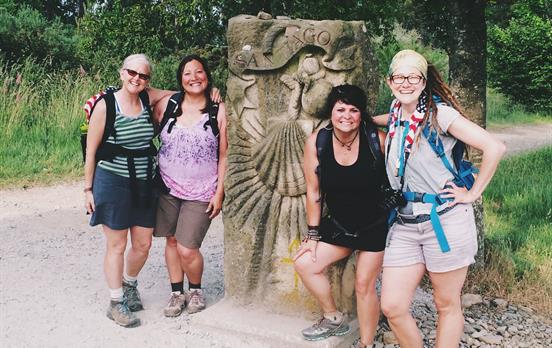
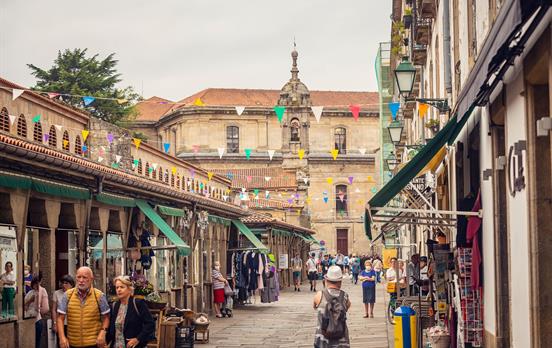
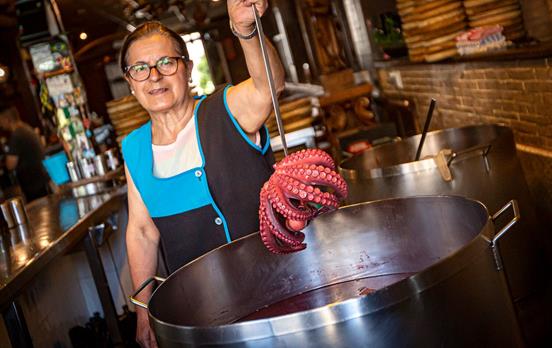
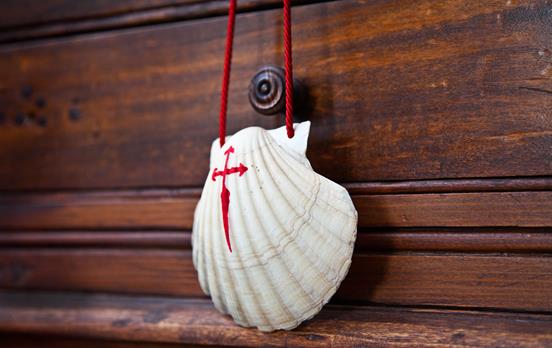

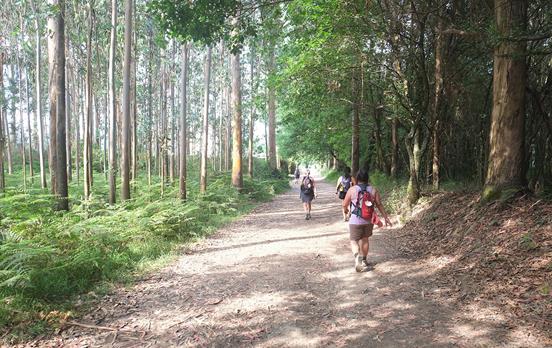
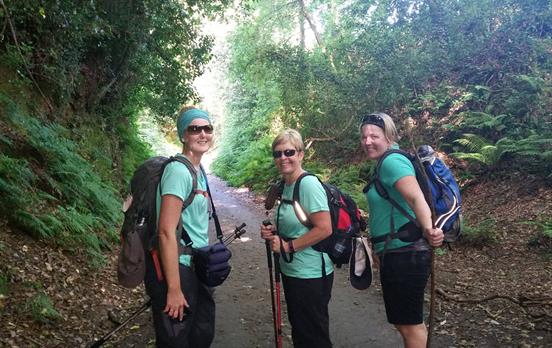
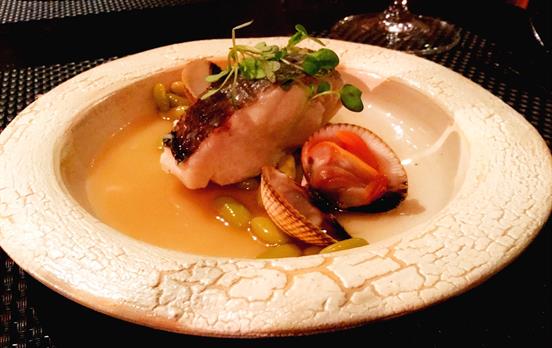
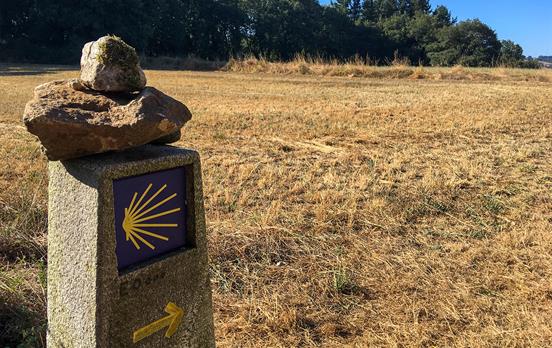
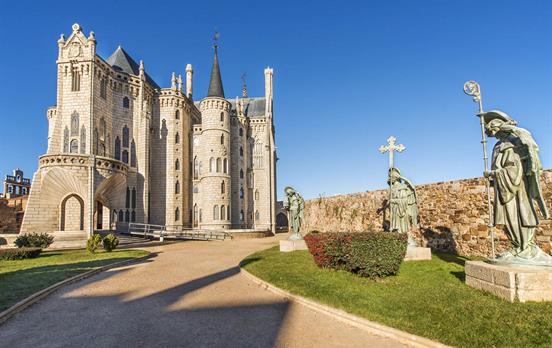
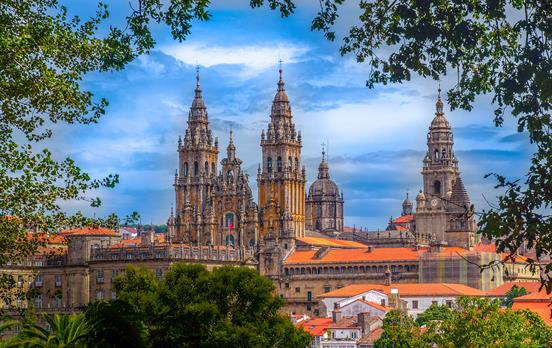
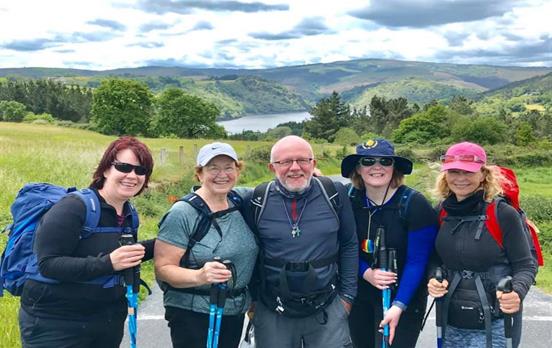

 Australia
Australia New Zealand
New Zealand South Africa
South Africa European Union
European Union